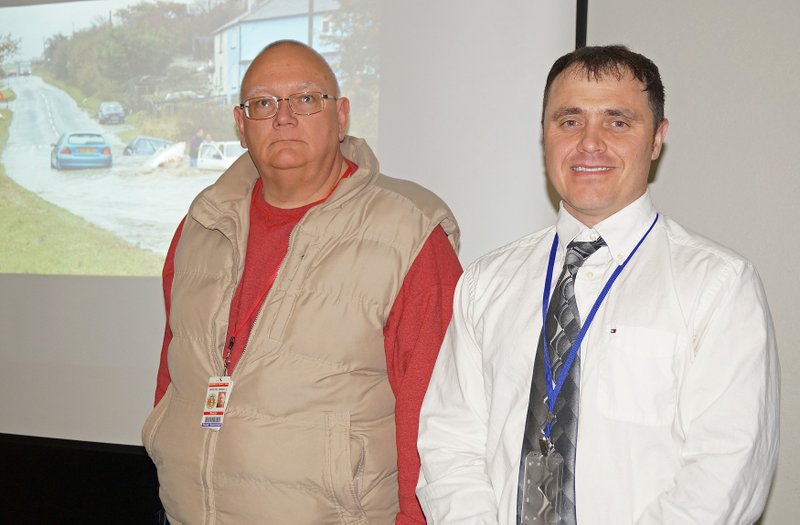Several McDonald County residents joined firefighters and law enforcement officers to train as storm spotters.
Doug Cramer, meteorologist from the National Weather Service office in Springfield conducted the Storm Spotter Class Feb. 8 at the Pineville Community Center. These classes are offered for extreme southeast Kansas and the Missouri Ozarks.
Cramer emphasized the importance of spotter reports and how they are a critical component of National Weather Service operations. In addition to using technology, science, training and experience, Cramer said reports from trained weather spotters contribute greatly when decisions are made regarding warning operations.
In his video presentation, Cramer pointed out what supercells look like. He pointed out that the most dangerous type of storm is the supercell. He said the wall cloud, which is part of the super cell, is sometimes a precursor to a tornado that usually forms within the wall cloud.
Cramer said storm spotters need to recognize wall clouds, which can be a fraction of a mile to nearly five miles in diameter, and -- if rotating -- are a warning sign of very violent weather. He said there is a lot of rising or sinking motion within and around the wall cloud that can be an indication that a tornado will touch down.
"Spotters should be able to identify signs of severe weather such as debris beneath a thunderstorm, rapid upper motion and rotation in wall clouds, sudden drops or increases in temperature, cold fronts, changes in dew point and wind direction changes, dust whirl at the ground connected to the cloud base, frequent lightning, and severe hail," Cramer said.
Cramer said that when reporting events, it's very important to tell the when and where so the report can be pinpointed. Cramer said when storm spotters are reporting, they should remain calm, speak clearly, and not exaggerate the facts. He said spotter reports should contain the following information:
• Report who you are, i.e., trained spotter
• What you have witnessed -- the specific weather event
• When the event occurred -- not when you make the report
• Where the event occurred using well-known roads or landmarks.
Cramer also spoke about flooding, flash flooding and the hazards of flooded roads at night when it is harder to see or tell how deep the water is. He distributed a Weather Spotter's Field Guide to attendees. The guides notes safety tips and facts to avoid being a victim of a flash flood:
• Do not attempt to drive or walk across a flooded road. You cannot be sure about the depth of the water.
• Two feet of moving water will carry away most vehicles.
• Six inches of fast-moving water can knock you off your feet.
• If your vehicle is suddenly caught in rising water, leave it immediately and get to higher ground.
• Be especially vigilant at night when flash floods are harder to recognize.
"The severe weather time-frame for this part of the country is mid-March through mid-June," Cramer said. "We have to have the mindset that we are close to 'tornado alley' and to be cognizant especially during this time frame. It is important to know what the best shelters are especially if caught by surprise by an impending tornado. If there is no basement, pick a small space in the house with as many walls as possible between you and the outside of the house."
Cramer has been a meteorologist since 2000. He reminisced that the most significant time in his career so far was on Jan. 8, 2008. He said there were ongoing warnings in McDonald County for four to five hours and there were a total of 35 tornadoes in southwest Missouri during that time.
Cramer grew up in southeast Kansas, on a farm where the weather was a big part of his life. His career goal is to serve the people of southwest Missouri and southeast Kansas by contributing to keeping people safe and to improving the economic value of weather information.
For further information regarding the National Weather Service and Storm Spotting Training see website: www.crh.noaa.gov/sgf.
Community on 02/11/2016
